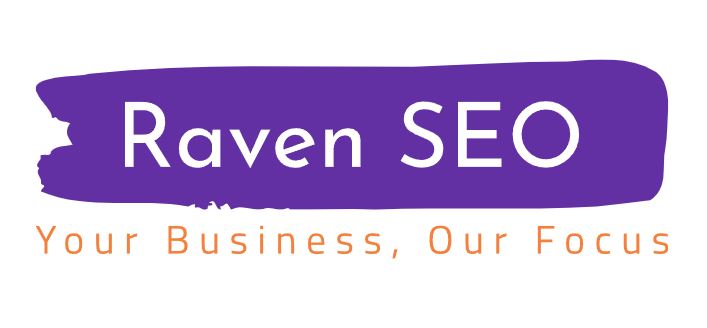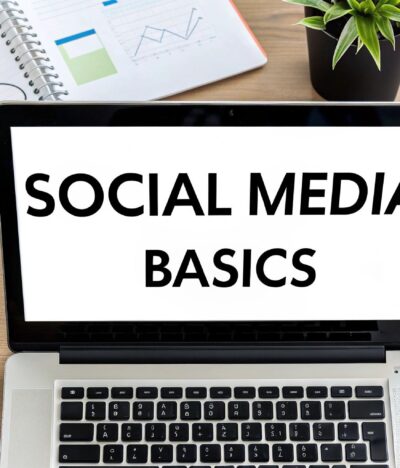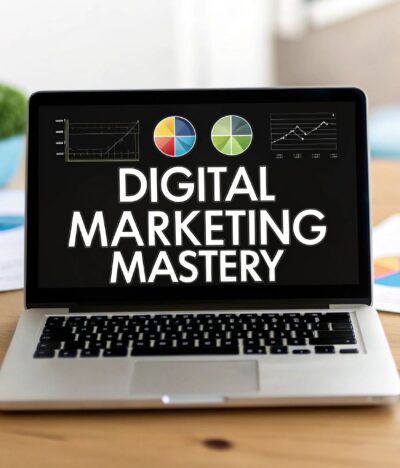It’s easy to get tangled up in jargon, but the relationship between blogging and content marketing is actually quite simple. Think of it this way: content marketing is the grand strategy—the blueprint for how you’ll attract and engage an audience—while your blog is a powerful tool you use to execute that strategy. It’s the engine that brings your entire content plan to life.
Why Blogging Is the Heartbeat of Modern Content Marketing
In a world where we’re all bombarded with ads, a great blog doesn’t shout; it guides. It’s not about pushing a sale but about becoming the most trusted, helpful voice on a subject your audience cares about. This approach builds a level of trust and authority that a banner ad could never achieve. In fact, a solid 70% of consumers say they’d rather learn about a company through an article than an advertisement.
Your blog should be the central hub of your digital world. Every valuable post you publish becomes a permanent asset. This isn’t just content that lives on your website; it’s the fuel for your social media, the core of your email newsletters, and a resource your sales team can share with potential clients.
From Just Publishing Posts to Building Real Assets
Here’s where the magic really happens. The true power of blogging is in its cumulative effect. A paid ad campaign is a rented space—it vanishes the moment you stop paying. A well-crafted blog post, on the other hand, can continue to attract organic traffic for years, becoming a more valuable asset over time.
A blog is the only marketing channel that helps you build a long-term asset with compounding returns. Every article you publish adds to your library of resources, strengthening your authority and search engine presence over time.
This strategy works so well because it perfectly matches how people behave today. When we have a problem, we don’t look for an ad; we head straight to Google for answers. A strategic blog puts your brand right there with the solution.
For example, an accounting firm that consistently blogs about small business tax tips isn’t just giving away free advice. They’re building a steady pipeline of leads who see them as experts and will remember them when it’s time to hire a pro.
Blogging vs Traditional Advertising At a Glance
To see just how different the approach is, let’s compare strategic blogging to traditional advertising side-by-side.
| Attribute | Strategic Blogging | Traditional Advertising |
|---|---|---|
| Asset Type | Builds a permanent, owned asset | A temporary, rented space |
| Audience Intent | Attracts an audience actively seeking solutions | Interrupts an audience with a brand message |
| Longevity | Content can generate traffic and leads for years | Impact ends when the campaign stops |
| Trust Factor | Builds authority and trust through valuable information | Often met with skepticism |
| Cost Over Time | Initial investment with decreasing cost-per-lead | Consistent, ongoing cost to maintain visibility |
The table makes it clear: blogging is about building for the future, while traditional ads are about capturing attention right now.
The Tangible Benefits of a Strategic Blog
The impact of consistent, high-quality blogging is very real and measurable. With over 600 million blogs out there, the competition is fierce, but the payoff for doing it right is huge.
Websites with active blogs see their indexed pages increase by an incredible 434% on average. They also attract 97% more inbound links—a massive factor for SEO success. To make sure you’re on the right track, it’s always a good idea to ground your efforts in proven content marketing best practices{:target=”_blank”}.
Ultimately, a blog is a multi-tool for business growth:
- It educates and nurtures leads. You can answer questions and guide potential customers through every stage of their decision-making process.
- It establishes your authority. Consistently publishing insightful content makes you the go-to expert in your field.
- It fuels your SEO. Each post is another chance to rank for keywords your customers are searching for.
- It creates shareable content. Blog posts are perfect for sparking conversations on social media, enriching your newsletters, and earning links.
If you’re looking for more ways to level up your strategy, feel free to explore our other guides on content marketing.
Building Your Content Strategy Foundation
A successful blog isn’t built on random acts of content. It’s built on a smart, deliberate strategy. Before you even think about writing a single word, you need a clear roadmap that connects what you publish to actual business results. This foundation ensures every article you create has a purpose, pulling the right people toward your brand.
The very first thing you need to do is get crystal clear on who you’re writing for. We have to move beyond vague demographics and really understand our audience. This is where creating detailed buyer personas becomes non-negotiable. These aren’t just fluffy descriptions; they are realistic profiles of your ideal customers, pieced together from market research and real data about the people you already serve.
Give your persona a name, a job, and real-world struggles. For instance, don’t just target “small business owners.” Instead, create “Marketing Maria,” a manager at a local home services company. She’s swamped, working with a shoestring budget, and desperate to generate more leads. Knowing Maria’s specific pain points lets you create content that speaks directly to her, turning your blog into an indispensable resource she can’t ignore.
Defining Your Core Content Pillars
Once you know who you’re talking to, you have to figure out what to talk about. This is where keyword research and topic clusters come into play. The old way of targeting a bunch of disconnected keywords is dead. Today, the goal is to build genuine authority around the broad subjects that matter most to your audience and align with your expertise.
The topic cluster model is a game-changer. It works like this:
- A Pillar Page: Think of this as your magnum opus on a broad topic. It’s a comprehensive, long-form guide that covers something like “The Ultimate Guide to Local SEO for Home Services.”
- Cluster Content: These are shorter, more focused blog posts that dive deep into related subtopics. Examples might be “How to Get More Google Reviews” or “Optimizing Your Google Business Profile for Local Search.”
- Internal Linking: Here’s the magic. Every one of those cluster posts links back to your main pillar page. This sends a powerful signal to search engines that you’re a true authority on the entire subject.
This approach doesn’t just keep your content organized; it gives your SEO a massive boost. For a much deeper dive into finding the right terms, check out our detailed guide on how to do keyword research.
Setting Clear and Measurable Goals
Your blogging efforts need clear objectives. Otherwise, how do you prove their value? Without setting key performance indicators (KPIs), you’re basically just publishing content into the void and hoping for the best. Your goals must be specific, measurable, and tied directly to real business outcomes.
A content strategy without goals is just a hobby. To drive real growth, you must define what success looks like and track your progress relentlessly. This is how you turn your blog into a predictable engine for your business.
What should you be tracking? Here are a few common KPIs for a strategic blog:
- Organic Traffic Growth: Aim for a specific percentage increase in visitors from search engines each quarter.
- Keyword Rankings: Keep an eye on how many of your target keywords are ranking on the first page of Google.
- Lead Generation: Measure how many new leads—like contact form fills or newsletter sign-ups—are coming directly from your blog posts.
- Conversion Rate: Monitor the percentage of blog readers who actually take a desired action.
This methodical process of setting goals, understanding your audience, and organizing your topics is the core of any strategy that actually works.
As you can see, a successful content plan always starts with clear goals and a deep understanding of your audience before you even start creating.
Mapping Content to the Buyer’s Journey
Finally, a truly powerful strategy maps every piece of content to a specific stage of the buyer’s journey. People have different questions and needs when they’re just starting to realize they have a problem versus when they’re about to pull out their credit card.
- Awareness Stage: At this point, someone is just experiencing symptoms of a problem but might not have a name for it. Your job is to create educational blog posts, simple checklists, and helpful guides that help them understand their issue.
- Consideration Stage: Now, they’re actively researching potential solutions. This is the perfect time to offer content like in-depth case studies, product comparison guides, and webinars that showcase your expertise.
- Decision Stage: They’re ready to make a choice. This is where content like customer testimonials, product demos, and free consultations can help close the deal.
Aligning your content this way ensures you’re always delivering the right message at exactly the right time, naturally guiding people from being curious readers to becoming loyal customers. The opportunity here is massive; the content marketing industry is projected to hit $107.5 billion by 2026, with 76% of marketers now relying on blogging. That alone shows why building a solid strategic foundation from day one is so critical. You can explore more about these trends by reading the full research about the latest blogging statistics.
Creating Blog Content People Actually Want to Read
Alright, you’ve got your strategy locked in. Now comes the fun part: moving from planning to actually creating the content. A brilliant idea is only as good as its execution, and for a blog to succeed, that means writing posts that grab the attention of real people and satisfy search engine algorithms. This isn’t just about filling a page with words; it’s about building an experience for your reader.
It all starts before you even type the first sentence of your post. Your headline is, without a doubt, the most critical piece of the puzzle. It’s the front door to your article. A weak headline means even a masterpiece of a post will just sit there, unread. Think of it as a promise to your reader—it needs to be compelling, clear, and perfectly represent the value they’ll find inside.
Crafting the Perfect Hook
Once that magnetic headline has earned you the click, you’ve got about three seconds to convince them to stick around. Don’t waste your introduction with vague fluff. You need to hook them immediately.
How? Try one of these approaches:
- Hit a nerve: Start by describing a problem or frustration you know your ideal reader is wrestling with.
- Ask a compelling question: Get their gears turning and make them curious for the answer you’re about to provide.
- Share a shocking statistic: A surprising piece of data can instantly frame the importance of your topic.
The goal here is simple: make the reader feel seen and confident that they’ve landed in the right place for a solution. You’re setting the stage for all the value that’s about to follow.
Structuring Content for Scannability
Let’s be honest—people rarely read blog posts word-for-word. They scan. They scroll. They look for the golden nuggets. Your job is to make that process as easy as possible by breaking your content into bite-sized, digestible pieces.
Walls of text are the enemy of engagement. The structure of your content is just as important as the words themselves. Use formatting as a tool to guide your reader’s eye and make your key points pop off the page.
This means getting comfortable with short paragraphs—two or three sentences, max. Use plenty of white space to let the content breathe. And, just as importantly, use clear, descriptive H3 subheadings to break up longer sections. This doesn’t just make it easier on the eyes; it also helps search engines understand the hierarchy and core topics of your content.
For a deeper dive into how Google views quality and structure, you should check out our guide on the power of E-E-A-T in crafting high-quality content.
Choosing the Right Content Format
Not every topic works as a standard article. The format you choose needs to match what your audience is looking for and what you want the post to achieve. It’s no shock that how-to articles are the most popular format (76%), with list-style posts following at 55%. Why? Because they offer direct, actionable solutions to user problems.
Here are a few high-impact formats I’ve seen work wonders:
- Comprehensive ‘How-To’ Guides: These are the deep-dive, step-by-step posts that walk a reader through a complex process from start to finish. They’re incredible for building authority and ranking for those valuable long-tail keywords.
- Engaging Listicles: You know them: “7 Common Mistakes in…” or “10 Tools to…” They are super shareable and incredibly easy to scan, breaking down information into a simple, numbered format.
- Customer Case Studies: Nothing builds trust like a real success story. Case studies show, rather than tell, how you solve problems and are perfect for readers who are close to making a decision.
- Expert Roundups: This is where you gather quotes and insights from multiple experts on one topic. It adds a ton of credibility and can massively expand your reach when all those experts share the final piece.
Putting in this level of effort pays off. The average blog post now clocks in at around 1,376 words and takes nearly four hours to write. That’s a clear signal that both readers and search engines expect depth and quality. You can find more fascinating numbers like this in BloggingWizard.com’s latest blogging statistics.
Weaving In Essential On-Page SEO
Finally, great content is pointless if no one can find it. As you write, you need to be weaving in on-page SEO best practices to give your post the best possible shot at ranking. This isn’t about awkwardly stuffing in keywords. It’s about creating an experience that’s seamless for both humans and search crawlers.
Keep this simple checklist in mind as you write:
- Strategic Internal Linking: As you mention related topics, link out to your other relevant articles. This is huge for keeping readers on your site longer and spreading authority across your pages.
- Image Optimization: Use descriptive file names for your images (e.g.,
content-structure-for-scannability.jpg) and always fill in the Alt Text. This helps with accessibility and can get you traffic from image searches. - Natural Keyword Use: Make sure your main keyword appears naturally in your title, URL, the first paragraph, and a couple of subheadings. Then, sprinkle related secondary keywords throughout the body of the article where it makes sense.
By blending compelling writing, smart formatting, and solid SEO fundamentals, you’ll create blog content that doesn’t just get published—it gets read, shared, and ranked.
How to Promote Your Content for Maximum Reach
Hitting “publish” feels great, doesn’t it? But if you think the work is done, you’re missing the most critical part. A brilliant blog post that nobody reads is like a concert with no audience—all that effort for nothing. The real work begins after you publish.
Building a smart, manageable promotion plan is what turns a simple blog post into a powerful content marketing asset. Forget just dropping a link on your social media and hoping for the best. A real strategy is about meeting your audience where they already are and giving them a compelling reason to click.
Find Your Audience on Social Media
You don’t need to be everywhere at once. Spreading yourself too thin is a classic mistake. Instead, focus on the social media channels where your ideal customers actually hang out.
Is your audience full of professionals and decision-makers? LinkedIn is your best bet for sharing deep insights. If you’re in a more visual space, like design or e-commerce, Instagram and Pinterest are perfect for sharing eye-catching infographics that lead back to your blog.
Once you know where to post, you need to tailor the what.
- On LinkedIn: Don’t just post the link. Start a conversation. Pose a thought-provoking question or pull a shocking statistic from your article to get other professionals talking.
- On Instagram: An article link in your bio isn’t enough. Create a simple carousel post highlighting 3-5 key takeaways. The final slide should be a clear call-to-action: “Get the full guide at the link in our bio!”
- On X (formerly Twitter): A long-form blog post can feel overwhelming on a fast-moving feed. Break it down into a thread of 5-7 bite-sized tips or quotes. It’s a native, highly shareable format that makes your content easy to digest.
This isn’t just about getting clicks; it’s about providing genuine value right in the feed, which makes people want to learn more.
Tap Into Your Biggest Fans: Your Email List
Your email list is gold. These aren’t random followers; they are people who have explicitly asked to hear from you. This makes them the warmest, most receptive audience you have. It’s no surprise that the Content Marketing Institute consistently finds email newsletters to be one of the most effective distribution channels.
But please, don’t just send an email with the blog post title and a link. That’s a missed opportunity. Frame it as something special, an exclusive update for your subscribers. Tease the best tip from the article or share a quick personal story that sets up the post’s main idea.
Your email list isn’t just a distribution channel; it’s a community. Nurture it by consistently delivering high-value content directly to their inbox, and they will become your most reliable source of traffic and engagement.
When you treat your subscribers like insiders, they don’t just read your content—they become your biggest advocates and share it with their own networks.
Get More Mileage by Repurposing Your Content
Here’s one of the smartest and most efficient promotion tactics out there: repurposing. You don’t always need a brand-new idea. Instead, take one amazing blog post and slice it and dice it into multiple formats.
This strategy extends the life of your hard work and lets you connect with people who might prefer watching a video over reading a long article.
Let’s say you wrote an in-depth “how-to” guide. You can spin that one piece into a whole ecosystem of content:
- An Infographic: Turn the key steps or data points into a visually appealing graphic. These are perfect for sharing on Pinterest or LinkedIn.
- A Short Video: Pull out the main points and turn them into a quick script for a YouTube Short, Instagram Reel, or TikTok video.
- A Week of Social Posts: Extract individual quotes, statistics, and tips to create 5-7 separate posts for the week ahead.
- A Checklist or Worksheet: Create a practical, downloadable PDF that helps readers apply your advice. This is also a fantastic lead magnet for growing your email list.
By repurposing, you can dominate a single topic across multiple channels without constantly struggling to come up with new ideas. It’s how you establish true expertise and get the absolute best return on the time you invested in that original post.
Using Data to Measure and Grow Your Blog
Writing great content is a fantastic start, but it’s only half the battle. The blogs that truly succeed—the ones that become predictable growth engines—are all built on a continuous feedback loop fueled by data. This isn’t about getting lost in complex spreadsheets; it’s about making smart, informed decisions. The best part? You can get incredible insights without spending a dime.
This whole process boils down to asking a few simple but powerful questions: What’s actually working? What’s falling flat? And where are our biggest, untapped opportunities for growth? By keeping an eye on a handful of key metrics, you can stop guessing and start making decisions that move the needle.
Identifying Your Core Performance Metrics
It’s easy to get overwhelmed by data, so the trick is to focus on the metrics that actually matter. For most bloggers, free tools like Google Analytics 4 (GA4) and Google Search Console are more than enough to paint a clear picture of what’s happening. They show you how people find your blog and what they do once they get there.
To start, get comfortable tracking these essential data points:
- Users and Sessions: This is your audience count. How many unique people are visiting, and how often are they coming back? A healthy upward trend here means you’re building a real audience.
- Traffic Sources: Where is everyone coming from? You want to see Organic Search growing over time—that’s the clearest sign your SEO efforts are paying off.
- Average Engagement Time: This tells you if people are actually reading. A low number might mean your intro isn’t hooking them, while a high number suggests your content is genuinely valuable.
Once you start monitoring these numbers, you’ll spot patterns. Maybe you’ll find that articles over 1,500 words have a much higher engagement time, or that posts with custom infographics get double the social shares. These are the clues that guide your future content.
Using Search Console to Uncover Opportunities
While GA4 shows you what’s happening on your site, Google Search Console (GSC) is your window into how your blog performs in Google search results. It’s a goldmine of insights that should directly inform your content strategy.
Think of Google Search Console as your direct line to Google. It tells you exactly what keywords people are using to find you and highlights your best chances to rank higher.
Here’s what to zero in on inside GSC:
- Top Performing Queries: Check out the search terms that are already bringing you clicks. You might be surprised to find you’re ranking for keywords you never even intended to target. This is pure, unfiltered feedback from the market.
- Pages with High Impressions, Low Clicks: This is one of my favorite reports. It shows you pages that Google is showing to a lot of people (high impressions), but very few are clicking. This usually points to a weak title or meta description. A quick rewrite can often give you a nice traffic bump.
- Keyword Cannibalization: GSC can also reveal if you have multiple pages accidentally competing for the same keyword. When this happens, you can confuse search engines and dilute your own authority.
To really master this, learning how to measure content performance and prove its value is the key to turning raw data into an actionable optimization plan.
Performing a Simple Content Audit
One of the highest-impact things you can do with your data is a content audit. It sounds intimidating, but it’s really just about systematically reviewing your old posts to find ways to make them better. You’re looking for hidden gems that just need a little polish.
Start by hunting for posts that fit these criteria:
- “Almost There” Posts: These are articles hanging out on page two of Google (positions 11-20) for their main keyword. They have potential!
- High-Traffic, Low-Conversion Posts: Pages that get tons of visitors but aren’t generating any leads, sign-ups, or sales.
- Outdated Content: Anything with old statistics, broken links, or information that’s just plain wrong now.
For an “almost there” post, a little refresh can often push it onto page one. You could expand a section with more detail, add some fresh statistics from the past year, or embed a helpful video tutorial. For that high-traffic post that isn’t converting, maybe it just needs a clearer call-to-action or a compelling content upgrade like a checklist. This methodical approach ensures every piece of content you’ve ever published is working hard for you.
Answering Your Top Questions About Blogging and Content
Even with the best strategy in hand, questions always come up. When you’re in the thick of it, trying to build something that works, a few common uncertainties tend to surface. Let’s tackle some of the biggest questions we hear about blogging and content marketing with clear, straightforward answers.
These aren’t just textbook definitions; they’re based on what we’ve seen deliver results, time and again, for businesses trying to carve out their space online.
How Often Should I Be Publishing New Blog Posts?
This is, without a doubt, the question I get asked most often. The answer is simpler than you might think: consistency always beats frequency.
It’s a thousand times better to publish one incredible, deeply-researched post every week than it is to churn out five short, forgettable articles just to hit a quota. Quality is what builds an audience. It’s what earns trust from people and, eventually, from search engines.
Find a schedule you can realistically stick to for the long run and focus on creating the absolute best resource for your audience every single time. That reliable delivery of value is what tells readers you’re a source they can count on, which is how you build a loyal following.
What’s the Real Difference Between Blogging and Content Marketing?
It helps to think of it like this: content marketing is the entire strategic game plan, and your blog is often the star player on the team.
- Content Marketing: This is the big picture. It’s the entire strategy of creating and sharing valuable stuff—videos, podcasts, social media content, ebooks, you name it—to attract and keep a specific audience.
- Blogging: This is a powerful tactic within that strategy. For most businesses, the blog is the central hub where their most substantive, foundational content lives.
Your blog is where you publish the pillar content that fuels everything else. A great blog post can be sliced up for social media, expanded into an ebook, or become the script for a video. It’s the engine that powers your wider marketing efforts.
Your blog is your home base. It’s the digital asset you actually own and control, where you build the expertise and authority that gets amplified everywhere else.
How Long Until I Actually See Results from Blogging?
Let’s be real: blogging is a marathon, not a sprint. You won’t publish three articles and see a flood of organic traffic overnight. You’re building a valuable digital asset, and like any solid investment, it takes time to grow.
Generally speaking, you can expect to see significant, measurable results in organic traffic and leads after about 6 to 12 months of consistent, high-quality blogging. But that doesn’t mean you’ll be flying blind for a year. You should start seeing encouraging signs much sooner, often within the first 3-6 months.
Keep an eye out for these early wins:
- Starting to rank for a handful of long-tail keywords.
- Seeing an uptick in social media shares and comments.
- Getting that first exciting inbound lead that came directly from a blog post.
The beautiful thing is that the effort is cumulative. The articles you optimize and publish today will keep working for you, attracting visitors and building your authority for years to come. It’s a true compounding return on your investment.
Can I Just Use AI to Write My Blog Posts?
AI is a game-changing tool, but it should be your assistant, not your author. Think of AI as an incredibly smart co-pilot; you still need to be the one flying the plane.
Use AI tools to make your workflow faster and smarter. They’re brilliant for things like:
- Brainstorming a dozen blog post ideas in minutes.
- Generating a solid outline to get you started.
- Smashing through writer’s block.
- Rewording a clunky paragraph to make it flow better.
This is where AI shines—as an accelerator for the human-led creative process.
But the final piece must have your unique human touch. Your personal stories, your brand’s specific insights, your genuine voice—that’s what connects with readers. It’s also what search engines are getting better at rewarding. Your expertise is the one thing AI can’t replicate, so don’t outsource your biggest competitive advantage.
Ready to put these answers into action? The team at Raven SEO lives and breathes this stuff. We build and run blogging and content marketing strategies that drive real, measurable business growth. Let’s create a plan that gets you found online and turns your readers into loyal customers. Get your free consultation today.




